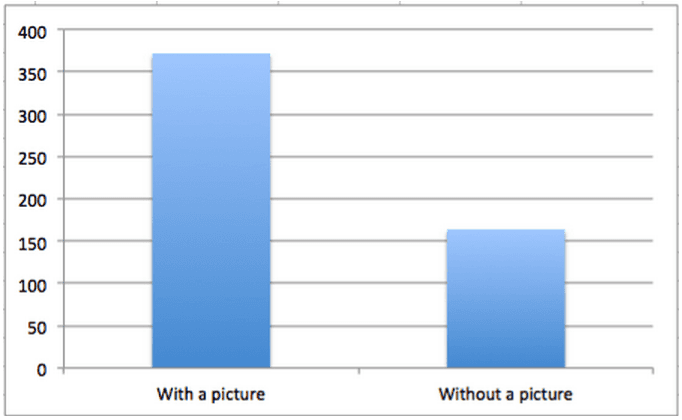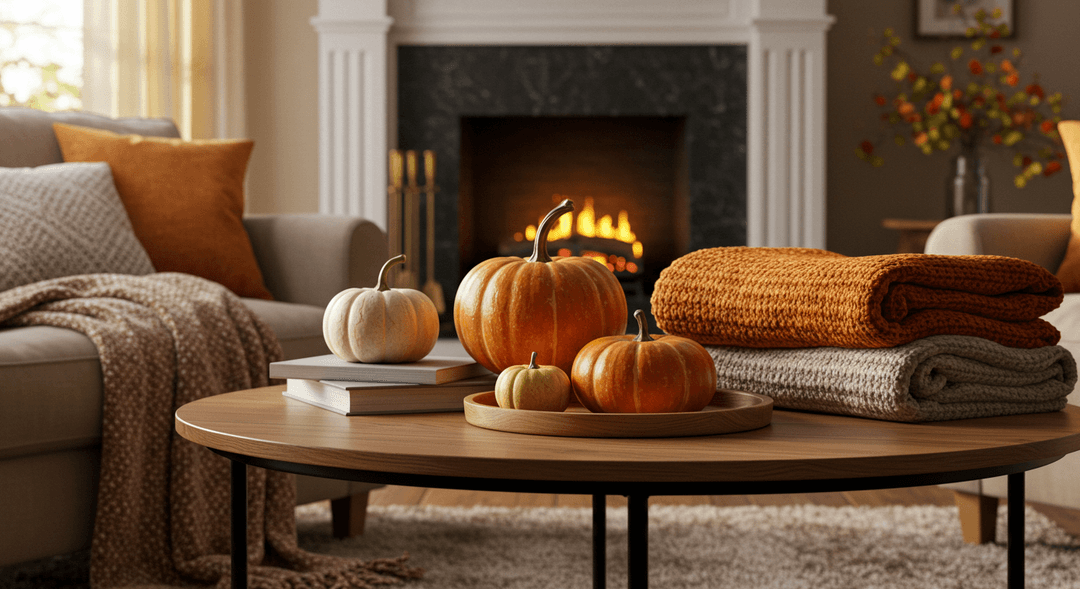What if your hero image did more selling than your headline?
It's very possible, but all too often images in blogs are an afterthought. That is a huge mistake. What's worse, is that every knows how important pictures are. That's why people say a picture is worth a thousand words. And the data backs this up. Accoring to research from BuzzSomo, Facebook post with images was 2.3X more likely to be shared. On Twitter, an article with a picture and summary post are 78% more likely to be shared.
Facebook Shared Posts

Make Pictures a Key Pillar of Your Blog Posts
Whenever you write, start with real pictures from your business. These will always be the most authentic. But then think about how other visuals can tell your story. For example, if you operate a summer camp that can look after kids on Friday nights, maybe you include an image of a happy couple out for dinner, enjoying a date night without the kids. Look for ways to include an image roughly every 100 words.
Key Principal: Focus on a Single Concept or Symbol
It can be tempting to try to generate an image that depicts a process. For example, “we take your ideas, run them through AI and produce images”. It’s always possible you can get the image you want for something like this, but it’s far more likely you’ll waste 2 hours begging AI for what you really want. Instead, focus on the outcome. Show a beautiful image and write about how many more of these you can create.
What To Avoid When Creating AI Images
- Going Down the Rabbit Hole - I’ve done this too many times to count. That picture is so close, if only AI could… If the image isn’t right, try to tweak it twice and then start trying to come up with a new idea. Otherwise, you can spend hours and not make any real progress.
- Writing Extremely Long Prompts - It’s tempting to put lots of detail into your prompts. In reality, AI can only handle so much.
- Creating Vague Prompts - As you practice with prompting, you’ll learn that you need to strike the right balance. Simple and clear is best. A vague prompt will lead AI to making guesses you don’t want.
- Trying to Generate Accurate Logos, Trademarks, or Recognizable Characters - AI has been trained not to do this, so it probably won’t work.
- Including Text in Your Images - you can probably get away with 1-2 words, but after that you’re playing with fire and it’s very likely you’ll get some strange results.
How To Create AI Images You Can Use
1. Be specific and descriptive:
Include details like colors, objects, setting, mood, and perspective.

Prompt: Action shot, photorealistic, a person's hands gently pouring freshly brewed coffee from a French press into a mug, steam rising. Natural morning light filtering through a kitchen window. Focus on the pouring action and rich coffee color. Close-up, high detail.
Why this works:
- Soft, natural lighting keeps tones flattering and realistic.
- Photorealism adds credibility and pairs well with business or product posts.
- High detail works for hero images—just remember to compress for web speed.
2. Use a single, clear concept per image
Focus on one idea or metaphor to keep the image clean and coherent.

Prompt: A photorealistic image of a clean, minimalist workspace with a laptop, notebook, and a cup of coffee. Morning sunlight filters in through a nearby window. The background is softly blurred, with greenery and calm tones creating a peaceful, focused atmosphere.
Why this works:
- Soft, natural lighting keeps tones flattering and realistic.
- Photorealism adds credibility and pairs well with business or product posts.
3. Choose a visual metaphor when possible
Use symbolic imagery (e.g., a growing plant to represent progress) instead of literal storytelling.

Prompt: Header image, photo of hands gently holding a small, thriving sapling, symbolizing nurturing customer relationships and growth. Soft, diffused natural light. Centered composition, emphasizing connection. Warm, inviting green and brown color palette. Photorealistic, 8K resolution.
Why this works:
- Deliberate placement keeps attention where you want it.
- Soft, natural lighting keeps tones flattering and realistic.
- Photorealism adds credibility and pairs well with business or product posts.
4. Use Adjectives Liberally
Employ descriptive adjectives to convey the mood, aesthetics, and specific details of your intended image (e.g., "a large, round, gleaming, silver UFO" instead of "a UFO")

Prompt: A photorealistic image of a confident businessperson presenting a strategy on a whiteboard in a modern office setting. The board shows an upward arrow and one simple chart. Natural lighting, neutral tones, and a sense of energy and purpose.
Why this works:
- Soft, natural lighting keeps tones flattering and realistic.
- Photorealism adds credibility and pairs well with business or product posts.
- A clear color palette sets the mood and keeps the image cohesive.
5. Specify Lighting
Describe the type, source, and quality of light to set the mood and enhance realism (e.g., "diffused natural light," "golden hour," "cinematic lighting," "hard light," "soft light," "sunlight," "moonlight," or "candlelight").

Prompt: A photorealistic image of a smiling small business owner working on a laptop at a cozy café table, with soft morning sunlight streaming through the window. The background shows shelves with plants and books, creating a warm and inviting atmosphere. Bright, natural colors, shallow depth of field, clean and inspirational composition
Why this works:
- Soft morning window light (coming through the window) gives warm, directional illumination with gentle shadows—realistic and uplifting.
- Shallow depth of field keeps the owner crisp while the café shelves blur into a cozy, non-distracting backdrop.
- Photorealistic style + bright, natural colors deliver a credible business look with healthy skin tones and an inviting mood.
6. Guide Composition and Framing
Use terms to direct the AI's "camera" and arrange elements effectively (e.g., "wide-angle shot," "low-angle perspective," "centered subject," "rule of thirds," "shallow depth of field," or "blurred background").

Prompt: Photorealistic wide overhead shot from behind, showing a small beach chair with a colorful summer dress draped over it, placed on a sunny, sandy beach. The chair appears small in the frame, surrounded by open beach, with a vast turquoise ocean taking up most of the background. Palm trees frame the edges. Bright natural sunlight, shallow depth of field focused loosely on the beach area. 8K UHD. Inviting, tropical atmosphere.
Why this works:
- Overhead framing gives breathing room and lets the environment tell the story.
- “From behind” invites the reader into the scene without awkward faces.
- Shallow depth of field isolates the subject and hides messy backgrounds.
7. Control Color Palettes
Specify desired hues and combinations using descriptive color terms or entire color schemes (e.g., "a vibrant sunset-inspired palette of fiery orange, deep red, and hints of purple" or "a muted, sepia-toned color palette").

Prompt: Photo for a blog post about 'Autumn Home Decor Tips,' a cozy living room scene with a fireplace, soft blankets, and decorative pumpkins on a coffee table. Warm, golden hour lighting. Inviting, comfortable composition. Rich, autumnal color palette of oranges, reds, and deep greens. Photorealistic.
Why this works:
- Soft, natural lighting keeps tones flattering and realistic.
- Photorealism adds credibility and pairs well with business or product posts.
- A clear color palette sets the mood and keeps the image cohesive.
An Easier Way to Write Blogs: Try Venadio For Free
Venadio is the easy way to create blogs that tell your story with images built in—just like this blog. Start your free trial at Venadio.com and turn your next idea into a visual, high-performing post in minutes.

